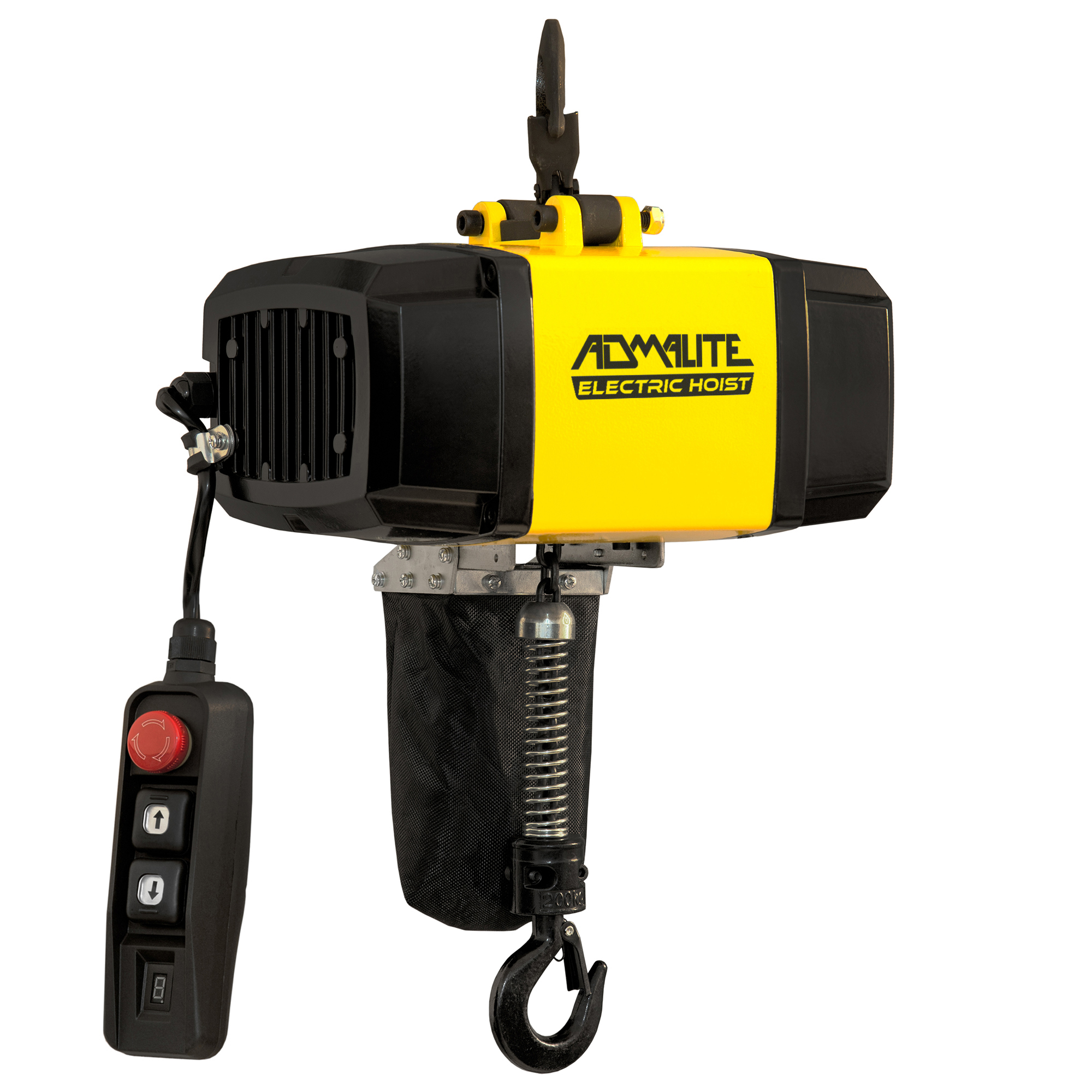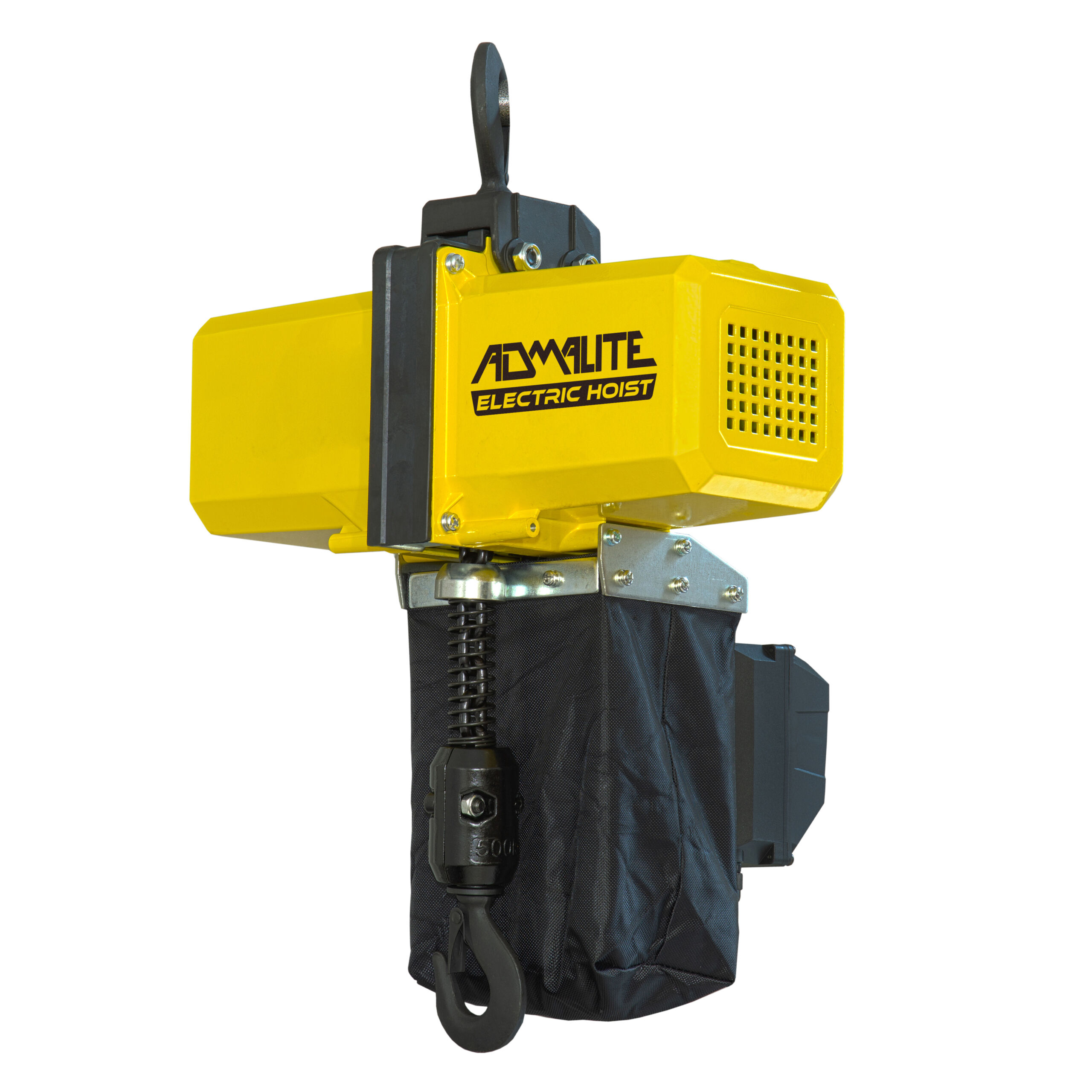Chain Hoist Overview
In many industrial settings, the need to lift heavy loads safely and efficiently is paramount. Whether it’s moving machinery or materials around a factory, loading and unloading shipping containers, or lifting goods onto high shelves, having the right equipment is essential. One such piece of equipment that has become increasingly popular in recent years is the electric chain hoist.
It is important to understand and follow the recommended duty cycle for your specific electric chain hoist to ensure safe and efficient operation. Operating the hoist beyond the recommended duty cycle can cause overheating and potentially damage the hoist or cause it to malfunction, leading to accidents and injuries. Following the recommended duty cycle will also help extend the hoist’s lifespan and reduce the need for frequent repairs or replacements.
How Electric Chain Hoists Work
Electric chain hoists are essentially motorized pulleys that use a chain to lift and move loads. They consist of a motor, a gearbox, a chain sprocket, a load chain, and a hook. The motor drives the gearbox, which turns the chain sprocket. The load chain is wrapped around the sprocket and is lifted and lowered as the sprocket turns. The hook at the end of the load chain is used to attach the load being lifted.
One of the benefits of electric chain hoists is that they come in a range of sizes and capacities to suit different needs. Some hoists can lift loads as light as a few hundred pounds, while others can handle several tons. They are also available in different speeds and lifting heights, which makes them versatile for different applications.
Safety Features
Safety is a top priority when working with electric chain hoists. Most hoists come with a variety of safety features, such as limit switches, overload protection, and emergency stop buttons. Limit switches ensure that the hoist stops at the desired height, while overload protection prevents the hoist from lifting more weight than it is designed to handle. Emergency stop buttons are used to immediately stop the hoist in case of an emergency.
Choosing the Right Electric Chain Hoist
When choosing an electric chain hoist, there are several factors to consider. First, you need to determine the weight of the load you will be lifting. This will help you choose the right capacity for your hoist. You also need to consider the lifting height, lifting speed, and power source. For example, if you need to lift heavy loads to great heights, you may need a hoist with a high lifting height and a slower lifting speed.
Another important factor to consider is the environment in which the hoist will be used. If the hoist will be used in a harsh environment, such as a factory with high temperatures or corrosive materials, you will need to choose a hoist that is designed for that environment.
Electric Chain Hoist Key Features
Electric chain hoists are an essential tool for lifting and moving heavy loads in industrial settings. They offer several key features that make them a popular choice for businesses and workers alike. Here are some of the key features of electric chain hoists:
- Power and Performance: Electric chain hoists are powered by electricity, which makes them more powerful and efficient than manual hoists. They can lift and move heavier loads with less effort and greater control, making them ideal for industrial applications.
- Capacity and Lifting Height: Electric chain hoists come in a range of capacities and lifting heights to suit different needs. Some hoists can lift loads as light as a few hundred pounds, while others can handle several tons. They are also available in different lifting heights, which makes them versatile for different applications.
- Speed Control: Electric chain hoists offer precise speed control, which allows operators to lift and move loads at a controlled pace. This is important when dealing with delicate or dangerous loads.
- Safety Features: Safety is a top priority when working with electric chain hoists. Most hoists come with a variety of safety features, such as limit switches, overload protection, and emergency stop buttons. These features ensure that the hoist stops at the desired height, prevents the hoist from lifting more weight than it is designed to handle, and allows the operator to immediately stop the hoist in case of an emergency.
- Durability and Reliability: Electric chain hoists are built to withstand the rigors of industrial use. They are made with durable materials and designed to last for years with proper maintenance. They also require minimal maintenance, which makes them a cost-effective choice for businesses.
- Ease of Use: Electric chain hoists are easy to use and require minimal training. They are operated with a simple pendant control or wireless remote control, which allows operators to lift and move loads with precision and ease.
- Versatility: Electric chain hoists are versatile and can be used in a variety of applications. They are ideal for moving machinery or materials around a factory, loading and unloading shipping containers, or lifting goods onto high shelves.
Overall, electric chain hoists offer a range of features that make them a popular choice for lifting and moving heavy loads in industrial settings. They offer power and performance, safety features, durability and reliability, ease of use, and versatility, making them an essential tool for businesses and workers.
Conclusion
Electric chain hoists are a versatile and efficient way to lift heavy loads in industrial settings. They offer greater control and precision than manual hoists and come in a range of sizes and capacities to suit different needs. When choosing an electric chain hoist, it’s important to consider the weight and height of the loads you will be lifting, as well as the environment in which the hoist will be used. With the right hoist, you can lift heavy loads safely and efficiently, saving time and reducing the risk of injury.
A duty cycle table for Electric chain hoists outline the recommended usage time and rest periods for the hoist to ensure safe and efficient operation. The chart below provides an example of duty cycle for an electric chain hoist:
CYCLE PERCENTAGE
CYCLE IN MINUTES
| Duty Cycle | Operating Time | Rest Time |
|---|---|---|
| Class A | 10 minutes | 50 minutes |
| Class B | 15 minutes | 45 minutes |
| Class C | 30 minutes | 30 minutes |
| Class D | 40 minutes | 20 minutes |
| Class E | 60 minutes | 10 minutes |
Note:
The duty cycle classification system can vary depending on the model of the chain hoist. The above table is just an example.
OTHER SERVICES
ADMALITE provides a range of services, including installation, maintenance, repair, load testing, customization, upgrades, consultation, replacement parts, and emergency callouts, ensuring their customers’ equipment operates safely and efficiently.
QUALITY GUARANTEE
UL Certification is a globally recognized standard for safety and quality assurance. UL Certification ensures that products and systems meet stringent safety requirements and comply with industry standards.
In the case of ADMALITE, their compliance with UL508A standards for industrial control panels ensures that their products are safe, reliable, and comply with industry standards, giving their customers peace of mind and confidence in the quality of their products.
FREE QUOTE
Do you need help finding out the right hoist? Fill out this form to get in touch.






